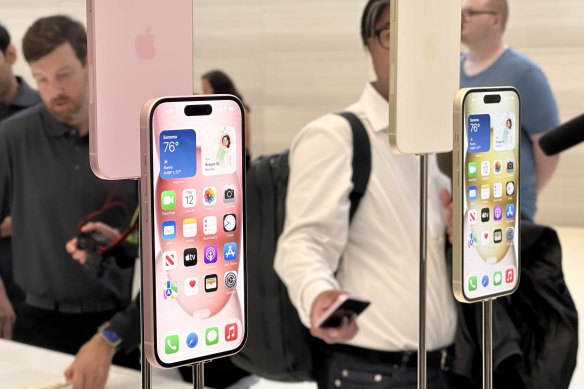
During its big iPhone 15 reveal event last week, Apple made a point of saying that its iPhones had grown in value and capability over the last year, but hadn’t raised at all in price. But that’s really only true in the US.
In Australia and in many other markets, the iPhone 15 is more expensive than the iPhone 14 was, presumably because of currency fluctuations. This makes them the iPhones with the highest dollar figure we’ve ever seen, starting at $1500 for the least expensive model and going all the way to $2900. And while it’s always a tricky business to compare iPhones to other smartphones in the market, you may understandably wonder if the new devices offer enough to justify what is, in some cases, twice the price of competitors.

The price of the base model iPhone in Australia continues to creep up steadily.Credit: Tim Biggs
What the iPhone is still missing
It’s no secret that Apple is a slow adopter of certain technologies, although it would likely prefer to consider itself a perfecter. Things like HD displays, OLED technology, secondary camera lenses, wireless charging and more came to Apple’s phones years after they were first seen on Androids. Things are largely the same today, as we can see by first taking a look at the standard iPhone 15 and the larger 15 Plus (which starts at $1650).
The most easily noticed missing feature for anyone who’s used a recent non-Apple phone is the refresh rate. The new iPhone 15 still uses the same 60Hz the devices have always used, while the iPhone Pro has joined many competitors at 120Hz. This is a measure of how many times per second the screen can display a new image, so higher numbers mean much smoother movement and touch that feels more immediate. Motorola’s Edge 30 Pro goes for $1000 and has a 144Hz screen, while Google’s Pixel 7a is $750 and has 90Hz.
Loading
Worse is the fact that the standard iPhone still does not have an always-on display to show notifications, time and other information when not in active use, which practically every non-Apple phone has had for at least five years, and it can’t transfer data at USB 3 speeds. Currently, these features are exclusive to the iPhone Pro.
For all the updates made to both the standard iPhone 15 and the Pro, both also come in behind the pack when it comes to certain features at comparative price points.
The maximum charging capacity of 30W is conservative next to other mainstream phones, including 45W on Samsung’s flagships, and far behind some Androids which support more than 100W. And notably, when it comes to optical zoom on the cameras, the standard iPhone has none to speak of, the $1850 Pro has 3x and the $2200 Pro Max has 5x. In Android land, Google’s $1300 Pixel 7 Pro also has a 5x optical zoom, and Samsung’s $1950 Galaxy S23 Ultra has a 10x.



























